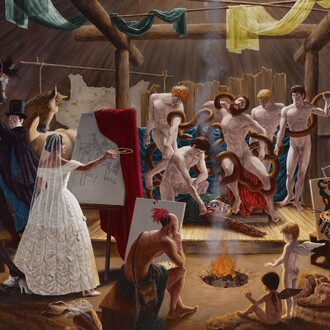Representation of the human body dates back to earliest antiquity. The portrait genre developed among the first civilizations, with humans shedding their fleshly forms to be reinvented as statuettes, carved in stone or drawn on walls. Stating definitively just when the generic ended and the singular began is a hazardous venture, however, since the space between self-sculpture and the question of the double also offers an opening for otherness. What is the position of the other relative to the self? That is one of the questions which prompted the selection of works gathered together here.
Photography, webcam, painting, family album, shadow theatre¾all platforms for staging the self. Self-representation is a very widespread tradition that began taking on heightened importance in the 1970s, at a time when artists were focusing more on their own individuality. Since then, this interest has continued to grow and the ways of expressing it have proliferated in society; no longer the exclusive preserve of artistic circles, today they are taking over our computer screens. Between identity and representation, forms and appearances, perception and reality, self and other, the self-portrait constitutes an exquisite paradox: it is a projection both outside the self and of the self.
Pictures for an Exhibition is an evolving cycle of exhibitions based on works from the collection and intended to generate new connections between historical works and recent acquisitions, between the different media and artists of various generations.
The Musée d’art contemporain de Montréal is grateful to Québec’s Ministère de la Culture et des Communications for a grant provided under its program to support permanent exhibitions, which has made this project possible.
















